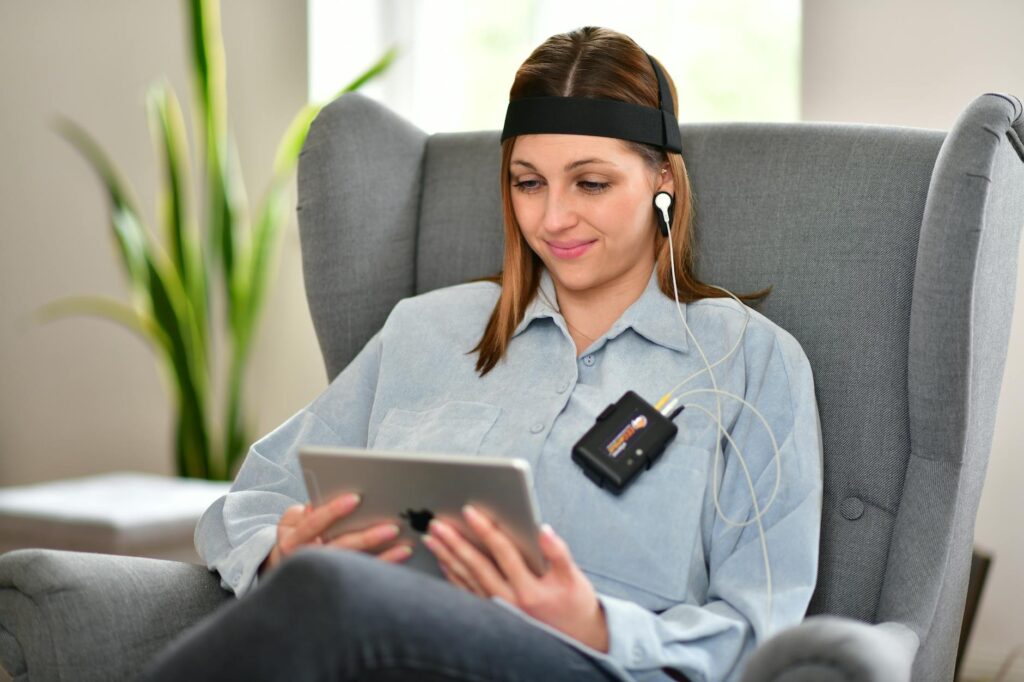What is biofeedback therapy?

What is biofeedback therapy?
Biofeedback therapy is an innovative technique that helps individuals gain control over their physiological functions, ultimately improving both mental and physical health. Imagine being able to tune into your body’s signals and regulate them consciously—this is the essence of biofeedback. By using various monitoring devices, this therapy provides real-time data about bodily functions like heart rate, muscle tension, and skin temperature. This knowledge empowers you to make informed adjustments to your body’s responses, leading to better health outcomes and an enhanced sense of well-being.
Understanding Biofeedback Therapy
Biofeedback therapy hinges on the principle of self-regulation. This process involves training individuals to observe their bodily functions and learn how to manipulate them consciously. It’s like having a dashboard that displays your body’s key performance indicators, allowing you to fine-tune your responses.
How Biofeedback Works
During a biofeedback session, sensors are placed on your body to measure various physiological functions. These can include:
- Heart rate
- Muscle tension (using electromyography)
- Breathing patterns
- Skin temperature
The data collected is displayed on a monitor, providing a visual representation of how your body reacts to different stimuli or thoughts. For instance, if you notice your heart rate increases during stressful moments, you can apply relaxation techniques to lower it. Over time, you learn to self-regulate these functions, ultimately leading to improved health outcomes.
Types of Biofeedback Techniques
There are several methods of biofeedback, each tailored to specific needs:
- Electromyography (EMG): This technique measures muscle tension. It’s particularly useful for managing chronic pain or tension headaches.
- Thermal Biofeedback: This method focuses on skin temperature, often used to improve circulation and alleviate stress-related disorders.
- Neurofeedback: A newer technique that trains individuals to regulate brain activity. It’s effective for conditions like ADHD, anxiety, and PTSD.
Each of these techniques provides insights that can significantly enhance your overall health and well-being. For more detailed information on how these methods function, you can check resources like Cleveland Clinic.

Photo by Mindfield Biosystems Ltd.
Benefits of Biofeedback Therapy
The advantages of biofeedback therapy are manifold, impacting various aspects of health and well-being.
Physical Health Improvements
Biofeedback therapy can be instrumental in managing chronic pain, muscle tension, and other ailments. By learning to control muscle relaxation through EMG feedback, individuals can alleviate stress and reduce the frequency of migraines and tension headaches. Moreover, conditions like hypertension can also benefit from this therapy, as individuals can learn to lower their heart rates and manage blood pressure more effectively. You can read more about these benefits on sites like WebMD.
Mental Health Enhancements
Stress, anxiety, and depression can take a toll on your mental health. Biofeedback therapy offers a way to address these conditions. By gaining insights into physiological responses to stressors, individuals can employ relaxation techniques to rewire their responses. Neurofeedback, in particular, has shown promise in treating anxiety and PTSD by helping individuals learn to regulate their brain activity.
Enhanced Performance and Productivity
Not just limited to health conditions, biofeedback therapy can also kick your performance into high gear. Whether you’re a student looking to focus better or a professional aiming to boost productivity, learning to control stress responses can lead to improved concentration and overall effectiveness. This therapy provides tools that help enhance focus, making it a valuable asset in academic and professional settings.
Applications of Biofeedback Therapy
Biofeedback therapy finds its way into various applications, making it a versatile tool for health management.
Clinical Settings
In hospitals and rehabilitation centers, biofeedback therapy is often part of treatment plans for chronic pain management, stress reduction, and even physical rehabilitation. Trained professionals guide patients through the process, ensuring they understand their physiological responses and how to regulate them effectively. You can find more information about its clinical applications at Mount Sinai.
At-Home Applications
Thanks to technological advancements, many individuals can now utilize biofeedback devices at home. These tools are designed to be user-friendly, allowing you to track your progress and apply techniques learned during therapy sessions. At-home biofeedback can support personal health management, making it accessible for those who prefer a more independent approach.
Considerations and Limitations of Biofeedback Therapy
While biofeedback therapy offers significant benefits, it’s essential to recognize its limitations.
Accessibility and Costs
The availability of trained biofeedback professionals can vary, making it difficult for some to access therapy. Additionally, the costs associated with regular sessions can add up, potentially making it a less viable option for everyone.
Not a Replacement for Traditional Treatments
Biofeedback therapy should be viewed as a complementary approach rather than a standalone solution. It’s often most effective when used in conjunction with traditional medical treatments and therapies. Always consult with healthcare professionals before relying solely on biofeedback for managing health conditions.
Conclusion: The Future of Biofeedback Therapy
Biofeedback therapy represents a promising avenue for personal development and wellness. With its ability to empower individuals to take control of their physiological responses, it holds the potential to improve overall health and quality of life. As we continue to explore the benefits of this therapy, it’s becoming increasingly relevant in various aspects of wellness management. By integrating biofeedback techniques into everyday life, you can enhance your mental and physical health in a meaningful way. The journey toward self-regulation could lead to a more balanced and fulfilled life.